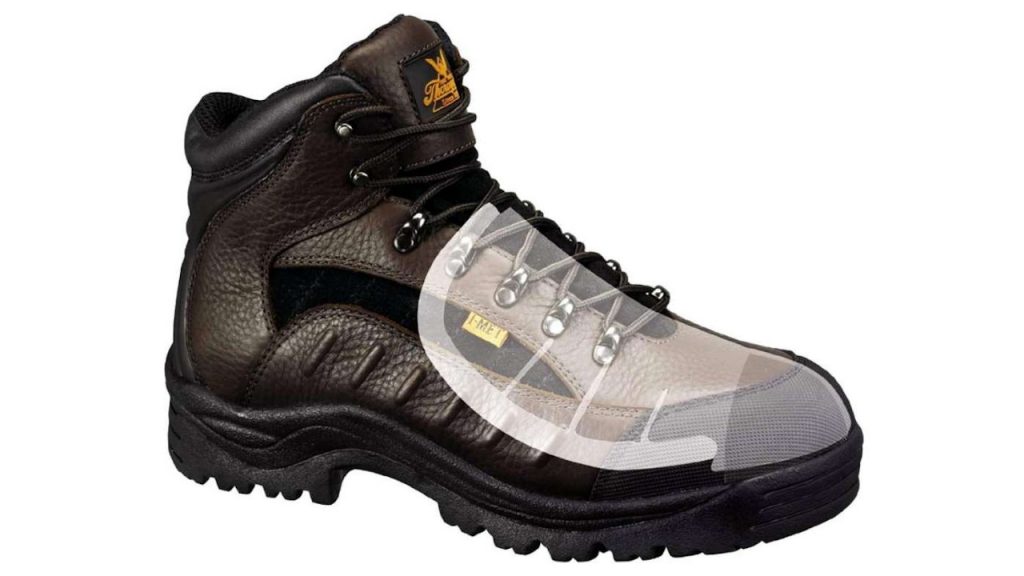Safety Guard Shoes
Protective, safety footwear is essential to ensure safe and healthy feet. Steel toecap boots and shoes that will protect your feet, help stop injuries and or reduce the severity of any injuries that may occur in the workplace. According to statistics , only one out of four victims of job-related foot injury wear any type of safety shoes or boots. The rest are unaware of the benefits of protective footwear. Today’s safety footwear is comfortable, flexible, and stylish and provides necessary protection from injury. The foot is the most valuable part of your body subjected to injury in industry. Because of the many potential work hazards, it is important that you discuss with your supervisor the safety shoe, boot, or other protective equipment that you need for your protection.
If you are at risk for foot injury at your workplace, you should wear the appropriate protective footwear.

- If foot protection is required, set up a complete foot safety protection program including selection, fit testing, training, maintenance and inspection.
- Safety footwear is designed to protect feet against a wide variety of injuries. Impact, compression, and puncture are the most common types of foot injury.
- Choose footwear according to the hazard. “Protective Footwear”.
- Best to use certified footwear. Ensure that it has the proper rating for the hazard and the proper sole for the working conditions.
- Use metatarsal protection (top of the foot between the toes and ankle) where there is a potential for injury.
Footwear must be chosen based on the hazards that are present. Assess the workplace and work activities for:
- Materials handled or used by the worker.
- Risk of objects falling onto or striking the feet.
- Any material or equipment that might roll over the feet.
- Any sharp or pointed objects that might cut the top of the feet.
- Objects that may penetrate the bottom or side of the foot.
- Possible exposure to corrosive or irritating substances.
- Possible explosive atmospheres including the risk of static electrical discharges .
- Risk of damage to sensitive electronic components or equipment due to the discharge of static electricity.
- Risk of coming into contact with energized conductors of low to moderate voltage (e.g., 220 volts or less).
- Type of walking surface and environmental conditions workers may be exposed to (e.g., loose ground cover, smooth surfaces, temperature, wet/oily, chemicals, etc.).
There are many instances where the foot and toes would be at risk. In many workplaces falling and rolling objects or cuts and punctures are a serious concern. A steel-toe safety shoe would help protect workers from injuries. There are many hazards the average working person comes in contact with every day. The proper footwear can prevent unnecessary accidents.
- to ankles from uneven walking surfaces or rough terrain
- of foot injury due to exposure to extreme hot or cold
- of slips and falls on slippery walking surfaces
- of exposure to water or other liquids that may penetrate the footwear causing damage to the foot and the footwear
- of exposure to rotating or abrasive machinery (e.g., chainsaws or grinders)
Of course even though safety is the paramount criteria it is also crucial that the footwear is comfortable Trying to find the right pair of shoes is often a difficult task. With literally thousands of available options, narrowing your options down and picking a pair can take a lot longer than we would like. This is especially true when trying to decide what kind of safety footwear to get, as there’s not just the style that’s important to you, it’s also important to consider how they fit and how practical they will be.

I’ve been involved in the welding industry for over twenty years. I trained in various engineering shops working on various projects from small fabrication and repairs through to industrial projects.I specialize in welding aluminum and food grade stainless steel and an now run an engineering shop fabricating equipment for the food industry.